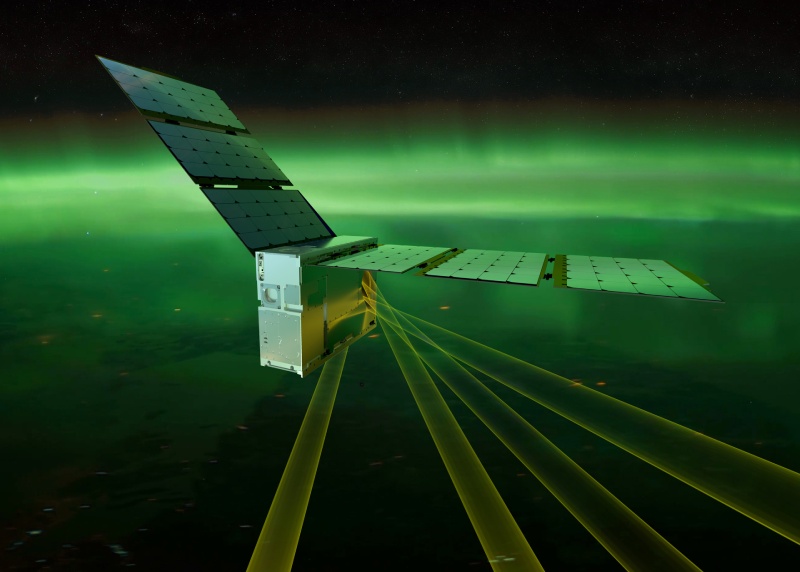NASA Launches the EZIE Mission to Discover Space Weather and Earth’s Aurora

NASA Electrojet Zeeman Imaging Explorer (EZIE) mission is scheduled to launch in March and will study the powerful electrical currents known as electrojets that flow through the Earth’s upper atmosphere around the poles. All three spacecraft carry a NASA JPL-built sensor called the Microwave Electrojet Magnetogram, which maps electrojets to help determine their evolution and structure.
When auroras glow in the sky, powerful electrical currents known as electrojets travel through the upper atmosphere, well above the poles of Earth. Approximately one million amps of electrical charge are pushed across the poles every second by these auroral electrojets. Rapid fluctuations in the currents can have consequences like power outages, and they can produce some of the biggest magnetic disturbances on the ground.
In an effort to eventually lessen the impact of such space weather on people on Earth, NASA intends to fly its EZIE (Electrojet Zeeman Imaging Explorer) mission in March to gather more information about these strong currents.
Three CubeSats, each roughly the size of a carry-on suitcase, are part of the EZIE mission. As they orbit the Earth from pole to pole, roughly 350 miles (550 km) above the ground, these tiny satellites will travel in a string-of-pearls setup, following one another. The spaceship will gaze down at the electrojets, which are located in the ionosphere, an electrified layer of Earth’s atmosphere that flows around 60 miles (100 kilometres) above the ground.
The spacecraft will employ a method that measures the microwave emission from atmospheric oxygen molecules, which is influenced by the magnetic fields of the electrojets.
A Microwave Electrojet Magnetogram, a device that can detect the Zeeman effect—in which the magnetic fields from the electrojets separate the microwave emissions from oxygen molecules—will be carried on each CubeSat.
Scientists will be better able to comprehend the formation and evolution of the electrojets by knowing the direction and strength of these magnetic fields.
NASA’s Jet Propulsion Laboratory (JPL) created this technology, which has been scaled down for use on tiny satellites and used in missions like CubeRRT and TEMPEST-D.
The Zeeman technique is “a game-changing approach” for researching an area of space that is hard to access directly, explains Sam Yee, principle investigator for EZIE at the Johns Hopkins Applied Physics Laboratory (APL).
It is too low for traditional satellites yet too high for balloons. Scientists will be able to measure the electrojets in a previously uncharted height range thanks to this new method.
In order to provide a useful layer of data to the study, these individuals will gather magnetic field data from the ground and compare it with the measurements made by the spacecraft.
As part of the Transporter-13 rideshare mission, the EZIE CubeSats will take off from Vandenberg Space Force Base in California on a SpaceX Falcon 9 rocket.
Since the electrojets are directly related to solar activity, which peaks during the solar maximum portion of the 11-year solar cycle, it is advantageous to launch during this time.
Alongside other missions like PUNCH (Polarimeter to Unify the Corona and Heliosphere), which is scheduled to launch in late February to investigate the Sun’s outer atmosphere and its involvement in the solar wind, EZIE is a part of NASA’s larger effort to explore space weather.
The mission is a ground-breaking, reasonably priced illustration of how major scientific discoveries might be made possible by tiny CubeSats.
The EZIE mission, which is headed by APL and funded by NASA’s Heliophysics Division and overseen by the Explorers Program Office at NASA Goddard, uses CubeSats manufactured by Boulder, Colorado-based Blue Canyon Technologies.
This innovative mission seeks to protect human infrastructure from the effects of space weather and to further our understanding of the Earth-Sun relationship.


